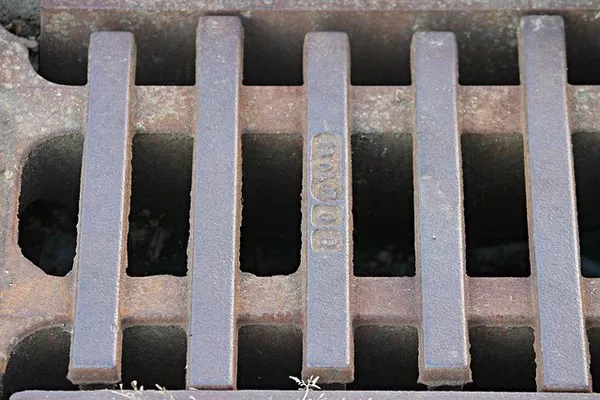As urbanization continues to rise, the effective management of sewage has become a crucial aspect of maintaining public health and environmental sustainability. Residential sewage treatment plants (RSTPs) have emerged as a solution to address the challenges posed by growing population centers. These plants offer a localized approach to treating sewage, reducing the burden on central sewage systems. However, understanding the costs associated with installing and maintaining a residential sewage treatment plant is essential for informed decision-making. This article delves into the factors that influence the cost of RSTPs and provides insights into their economic viability.
Factors Influencing Costs
Several factors play a pivotal role in determining the cost of a residential sewage treatment plant. These factors can be broadly categorized into initial installation costs and ongoing operational and maintenance expenses.
1. System Design and Capacity:
The complexity of the treatment system and its capacity are significant drivers of cost. A more sophisticated system capable of treating larger volumes of sewage will naturally require a higher investment. The capacity of an RSTP is often determined by the number of households it needs to serve.
2. Technology Selection:
The choice of technology used in the treatment process is a major cost influencer. Different technologies, such as aerobic systems, anaerobic systems, and membrane bioreactors, vary in terms of efficiency, maintenance requirements, and initial costs. Advanced technologies tend to come with a higher upfront price tag.
3. Site Conditions:
The geographical location and topography of the installation site can impact costs. Sites with challenging terrain or poor soil quality might require additional engineering efforts, such as excavation, leveling, or specialized foundation construction.
4. Permitting and Regulatory Compliance:
Acquiring the necessary permits and meeting regulatory standards can incur costs. Compliance with environmental regulations and obtaining approvals from local authorities contribute to the overall expenses.
5. Installation and Labor Costs:
The cost of labor, including excavation, installation, and system setup, can vary based on local labor rates and the complexity of the installation process.
6. Access and Infrastructure:
The ease of access to the installation site and the availability of necessary infrastructure, such as electrical connections and water supply, can impact costs. Remote locations might require additional expenses to establish these essential connections.
Cost Breakdown
To provide a comprehensive overview, let’s break down the costs associated with residential sewage treatment plants into two main categories: initial installation costs and ongoing operational and maintenance expenses.
Initial Installation Costs
Equipment and Technology: The heart of any sewage treatment plant is its technology. The cost of equipment such as tanks, pumps, aeration systems, filtration units, and control systems forms a substantial portion of the initial investment.
1.Site Preparation: Clearing the installation site, excavating, and preparing the area for construction are integral components of the installation process and contribute to the upfront costs.
2. Labor and Installation: Hiring skilled labor for installation, including plumbers, electricians, and construction workers, adds to the overall expenditure.
3. Engineering and Design: Engaging professionals to design the system layout, assess site suitability, and create detailed engineering plans is essential and comes with associated costs.
4. Permits and Approvals: Acquiring the necessary permits and complying with regulatory standards require paperwork, fees, and sometimes consultation with experts, all of which contribute to the initial costs.
Ongoing Operational and Maintenance Expenses
Energy Consumption: Most sewage treatment plants require energy to operate pumps, aeration systems, and other equipment. Energy costs constitute a significant portion of the ongoing expenses.
Chemicals and Supplies: Depending on the treatment technology used, chemicals for disinfection or maintenance might be necessary. Regular supplies such as replacement filters and monitoring equipment also contribute to operational costs.
Routine Maintenance: Scheduled maintenance, inspections, and repairs are vital to keep the system running efficiently. Hiring maintenance personnel or contracting with service providers adds to ongoing expenses.
Labor Costs: Employing staff to oversee daily operations, routine maintenance, and emergency response is a consistent cost for larger residential complexes with sizable sewage treatment plants.
Replacement and Upgrades: Over time, certain components of the treatment system may wear out and require replacement or upgrading. This is a long-term consideration that contributes to the overall lifecycle cost.
Economic Viability and Considerations
Assessing the economic viability of a residential sewage treatment plant involves weighing the initial investment against the long-term benefits. While the upfront costs can be substantial, the advantages include reduced strain on central sewage systems, potential environmental benefits, and increased property value for residential complexes with advanced sewage treatment infrastructure.
To determine economic feasibility, it’s essential to conduct a cost-benefit analysis that considers factors such as:
Projected Lifespan: Understanding the expected lifespan of the treatment system helps in evaluating the long-term return on investment.
Utility Savings: In areas where connection to a central sewage system is expensive, RSTPs can offer cost savings over time.
Environmental Impact: Investing in sewage treatment aligns with sustainability goals and might lead to positive public perception and community support.
Regulatory Compliance: Avoiding fines or penalties due to non-compliance with sewage disposal regulations is a significant financial benefit.
Conclusion
Residential sewage treatment plants present a localized solution to the challenges of sewage management, offering benefits that extend beyond immediate cost considerations. While the initial investment and ongoing expenses can be substantial, they need to be evaluated in the context of long-term savings, environmental impact, and regulatory compliance. As technology continues to advance and urban populations grow, the costs associated with RSTPs are likely to evolve. In the pursuit of sustainable urban development, understanding these costs is a fundamental step towards informed decision-making for homeowners, developers, and policymakers alike.

